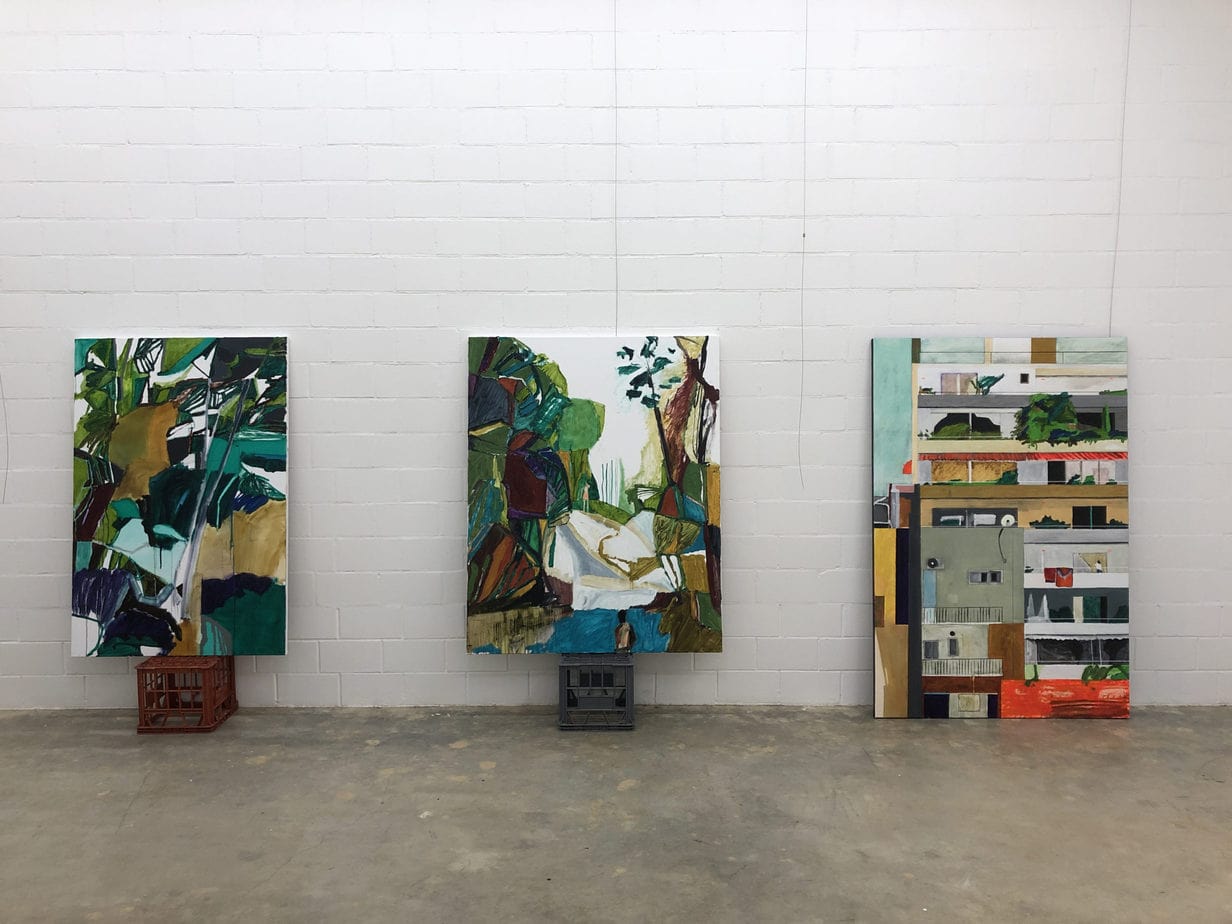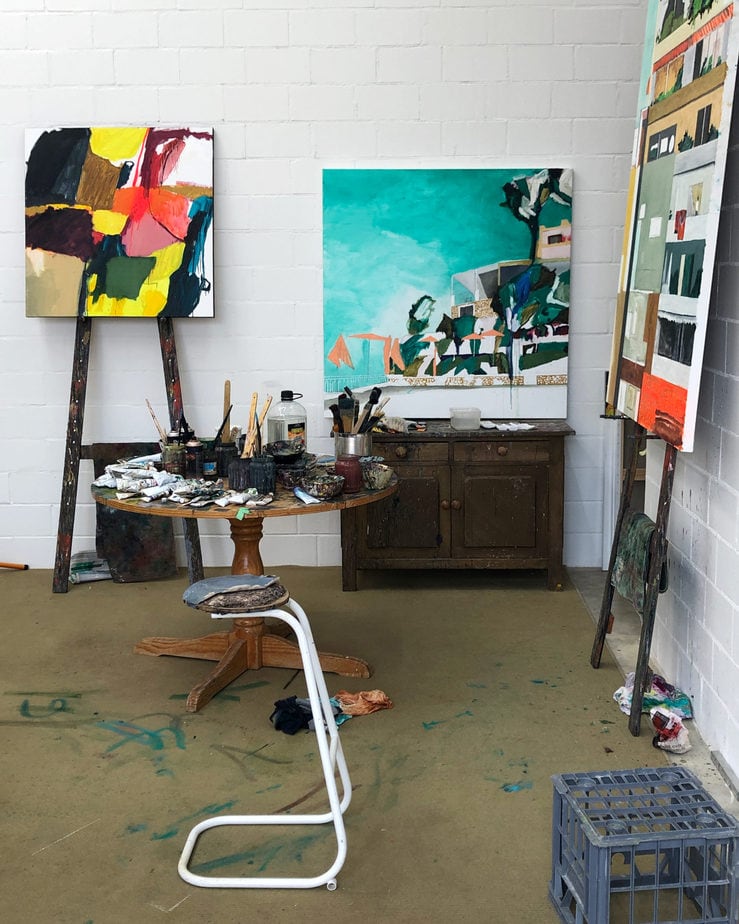With a practice that alternates between abstract and more figurative painting, Waldemar Kolbusz’ works come naturally charged with a high energy. His large brightly coloured canvases pulsate and move, allowing a rich engagement with the works. He has always worked in a fluid way, often resolving numerous paintings simultaneously, and whilst a significant shift in thinking is required for different genres, his cerebral approach allows him to do both. It informs and nourishes the work; allowing freedom in the figurative works and giving shape to the abstract.
Kolbusz has been commissioned for major projects Australia-wide and his paintings have been collected nationally and internationally. His works are included in corporate collections around the country.
We are delighted to share some insights into Wal’s studio practice in the below Q&A.
GS: You have had a solid practice now for more than two decades, and we are thrilled to be hosting your first solo exhibition with Gallerysmith in June 2020. Can you tell us what we can expect from this series?
WK: In this series, I am closely investigating the overlap between my two streams of works and specifically in terms of identity and chance. I continue to be interested in understanding points of change in my abstractions, within the painting process – to pinpoint exactly when less-considered marks come together and change from something of a mess to something more resolved, but allowing chance to control this.

I have always been obsessive about order which served me well in my previous career as a certified practicing accountant. The degree to which we are all challenged in our daily lives between order and mess, the controlled and spontaneous, big picture and small detail, draws me in.
In my figurative works, these themes continue in relation to my life and travels, and my art career. I am painting the moment when a part of my life becomes more understandable, less entangled or messy, and being aware of the role chance played in these moments. A lot of these moments of course happen during travels or outside our daily momentum.

This show is about what I do, who I am, the role chance plays in all of that and my role in everything bigger than me.
GS: Your work flips between abstract paintings and more figurative work, which is unusual for an artist. How do these two disparate ways of working interact with one another?
WK: Both have similarities in technique and palette and there is a consistent ‘feel’ across them.
A lot of viewers look for objects or identifiable markers in abstractions as clues to a meaning for the artwork. And this is partly why the eye will wander through the works. My figurative works exclude obvious landmarks or focal points forcing the eye to wander similarly, looking for something.

Self-isolation has also brought into sharp focus for me the safety and privilege of my studio practice.
GS: In this current climate, we think that colour is more important than ever. How significant is colour to your practice?
WK: Without colour I wouldn’t have my art practice, it’s what I use to make meaning in and of my work. While it has always been crucial to me, I agree that it is becoming more important in this current climate. Connecting with others becomes more important in times of restriction, and we look for different ways to communicate and feel.
I have studied colour in my work for two decades. While this better fluency now gives me confidence to manipulate it to both delight and unnerve, it is colour which ultimately still manipulates me.

